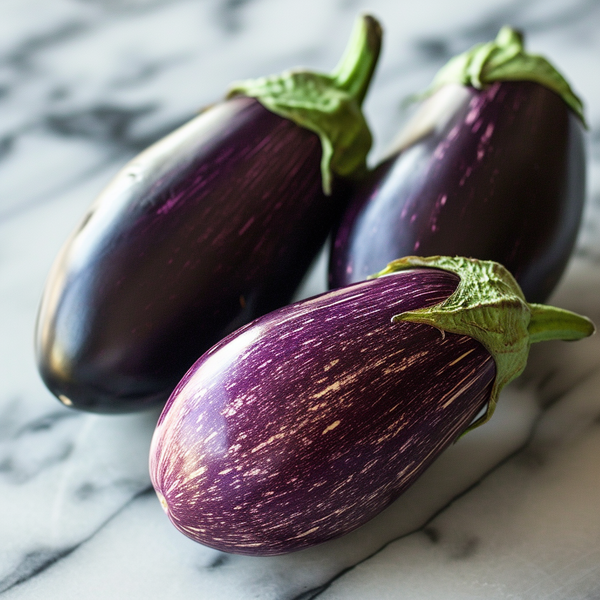
Eggplant
Eggplant, also known as aubergine, is a versatile vegetable known for its unique texture and ability to absorb flavors. It's used in a wide array of dishes across various cuisines, from Mediterranean and Middle Eastern to Asian. Here's how eggplant is commonly used in cooking:
Grilling: Sliced or halved eggplants can be grilled, which gives them a smoky flavor. They can be marinated beforehand or simply brushed with olive oil and seasoned. Grilled eggplant works well in sandwiches, salads, or as a side dish.
Roasting: Roasting eggplant in the oven until it's tender and caramelized enhances its natural sweetness. It can be roasted whole, in halves, or in pieces and used in dips, salads, or as a standalone side.
Baking: Eggplant is a key ingredient in baked dishes like moussaka and eggplant parmesan (parmigiana di melanzane), where it's layered with sauces and cheeses and baked until bubbly.
Stir-Frying: In Asian cuisine, particularly Chinese, eggplant is often stir-fried with spices, sauces, and other vegetables or meats, absorbing the flavors while maintaining a soft texture.
Stewing: Eggplant is used in stews, such as the French ratatouille, the Middle Eastern moussaka, and the Italian caponata, where it contributes a creamy texture and a rich, complex flavor to the dish.
Frying: Slices or cubes of eggplant can be fried until golden and crispy. They can be coated in batter or breadcrumbs, or simply fried as is and served with dipping sauces.
Stuffing: Eggplants can be halved and hollowed out to create a "boat" that's stuffed with a filling of meats, grains, vegetables, and seasonings, then baked.
Making Dips and Spreads: Roasted or grilled eggplant is often pureed to make dips and spreads, such as baba ganoush, where it's mixed with tahini, garlic, lemon juice, and herbs.
Steaming: Steaming eggplant is a healthier preparation method that keeps the vegetable moist. It's often used in Asian dishes, dressed with flavorful sauces.
Pickling and Preserving: Eggplant can be pickled or preserved in oil, vinegar, or brine, creating a tangy condiment that can be added to salads, sandwiches, or served as part of an antipasto.
When cooking with eggplant, it's important to consider its sponge-like ability to absorb oils and liquids, which can lead to overly greasy dishes if not managed properly. Some recipes call for salting and draining eggplant slices before cooking to remove bitterness and excess moisture. Eggplant's mild flavor and meaty texture make it an excellent vehicle for a wide range of seasonings and cooking techniques, allowing it to be the star of a dish or a complementary ingredient.
Nutritional Information
calories
24
carbohydrates
5.7 g
fats
0.19 g
protein
1.01 g